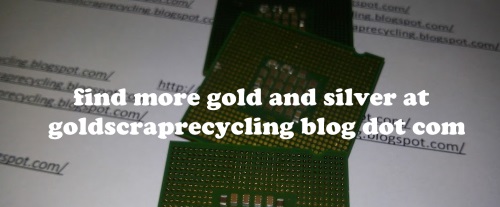The amount of computer
waste increases annually as electronic systems play an increasingly important
role in all aspects of technology, but significant amounts of material used in
the devices are not recovered. Because microchip development is so rapid
(Hamilton and Takahashi, 1996), users are able, every 18 months, to purchase
computers that are twice as powerful at the same price as those currently
available (Jung, 1999). This cyclic trend (with its inherent surplus of old computer
components) has been sustained for nearly 20 years of recent computer history.
To meet consumer demand, the computer and electronics industry has become the
largest manufacturing employer in the United States, representing 11 percent of
the gross domestic product and growing at an annual rate of 4 percent (Porter,
1998).
The quantities and
types of materials used in computer products to meet this demand are great and
varied, as is the potential to recover these computers and their materials for
reuse, remanufacturing, and recycling. In 1998, nearly 43 million new PC’s and
notebook computers were purchased by consumers in the United States; and it is
estimated that in the year 2003, nearly 70 million computers will be purchased
by consumers in the United States (National Safety Council, 1999).
In 1997, it was
estimated that between 1985 and 2005, approximately 325 million PC’s would
become obsolete in the United States (Jung, 1999). In a business environment,
the useful life of a PC is about 2 years, while in homes PC’s are used from 3
to 5 years (Jung, 1999). Between 14 and 20 million PC’s become obsolete every
year in the United States. About 75 percent of these obsolete computers are not
discarded because their owners perceive them to be valuable (Goodrich, 1999); a
portion of these will not be recycled. For every three computers purchased in
the United States, two will be taken out of service, and this ratio is expected
to increase to 1:1 by 2005. It is projected that by 2005, a total of 680
million PC’s will have been sold worldwide. Of that total, it is estimated that
150 million computers will be recycled that year and 55 million computers will
end up in landfills along with unreclaimed portions of the 150 million recycled
computers (Hamilton and Takahashi, 1996).
Figure 2 is a
generalized materials flow diagram that shows what happens to obsolete PC’s and
their components.
This figure includes
• computers that
owners retain (but do not use) or donate or dispose of directly or indirectly
to municipal waste and hazardous waste landfills (The U.S. Environmental
Protection Agency (EPA) categorizes cathode ray tubes (CRT’s) as hazardous
waste, although exemptions exist for disposal of equipment generated by
households and small business.)
• computers that can
be refurbished and sold or donated by companies or organizations
• what happens to
computers that can be dismantled and sold for reuse, melted and recycled,
incinerated as a fuel for producing energy, and disposed of in landfills.
Computers and otherelectronic devices represent a large resource of potentially recoverablematerial. Table 1 lists selected types and amounts of material reportedly
recovered in 1997 and 1998 from computer and other electronic scrap. In 1998,
about 2.6 million PC’s and notebook computers were recycled in the United
States, and this number is expected to quadruple by 2003 (National Safety
Council, 1999). Recyclers received nearly 50 percent of electronic products
directly from manufacturers; about 30 percent from large companies that utilize
electronics in their business; and the rest from small companies, government
offices, and individuals (National Safety Council, 1999).
Some scrap is unwanted
because of low precious metal content and the potentially hazardous nature of
some of its materials. For example, the presence of lead in some electronic
scrap prevents it from being placed in a municipal landfill. Some refiners
actually have to charge as much as $1 per pound to process the scrap because of
these deleterious materials (Broughton, 1996).
Some scrap was
exported to Taiwan for open burning and chemical processing; however, the
Taiwanese government had reportedly become increasingly concerned about the
environmental damage caused by this practice (Broughton, 1996). Chinese and
other Asian consumers pay 15 to 20 cents per pound for electronic scrap on the
U.S. West Coast (Goodrich, 1999). Environmental regulations are less strict (or
not enforced), and labor costs are much lower in some of these countries.



No comments:
Post a Comment